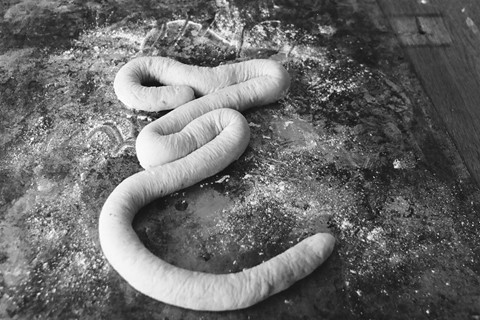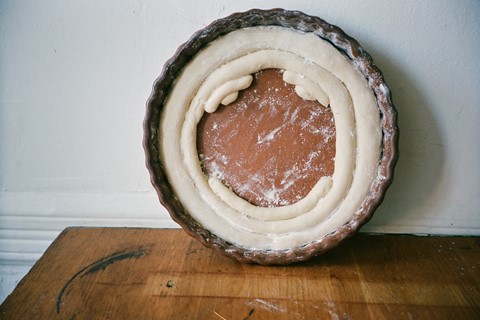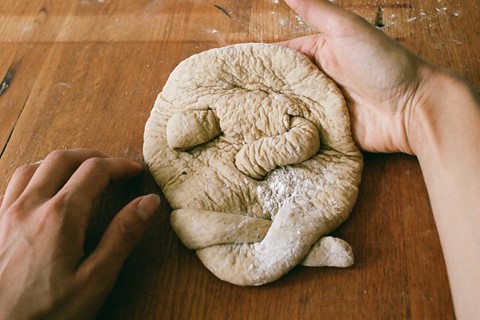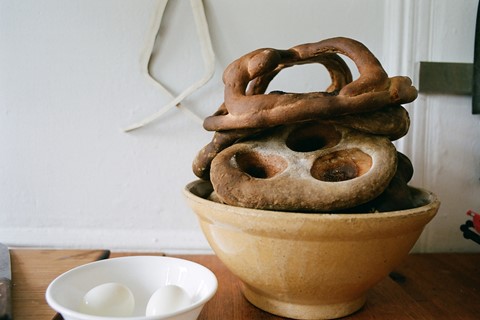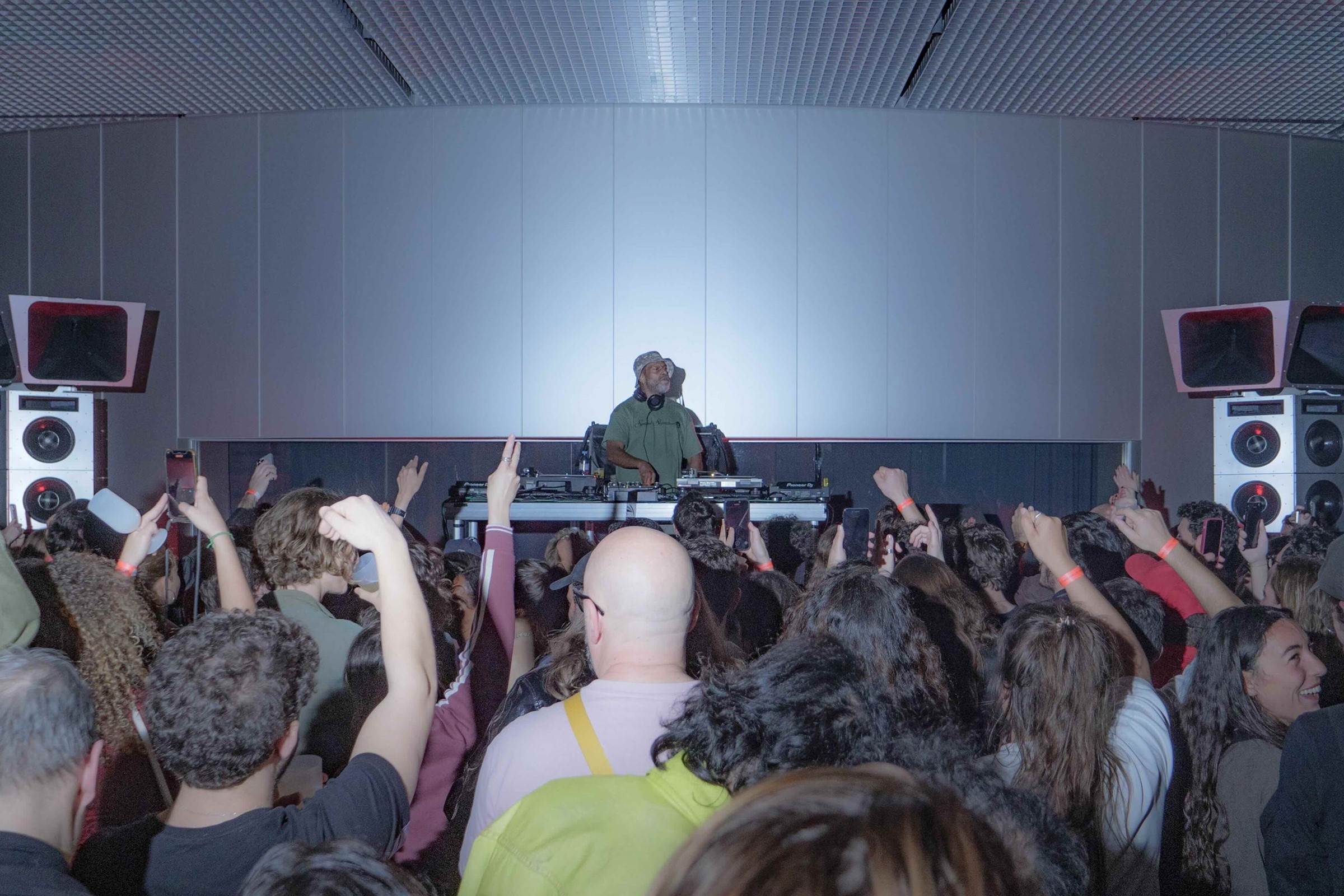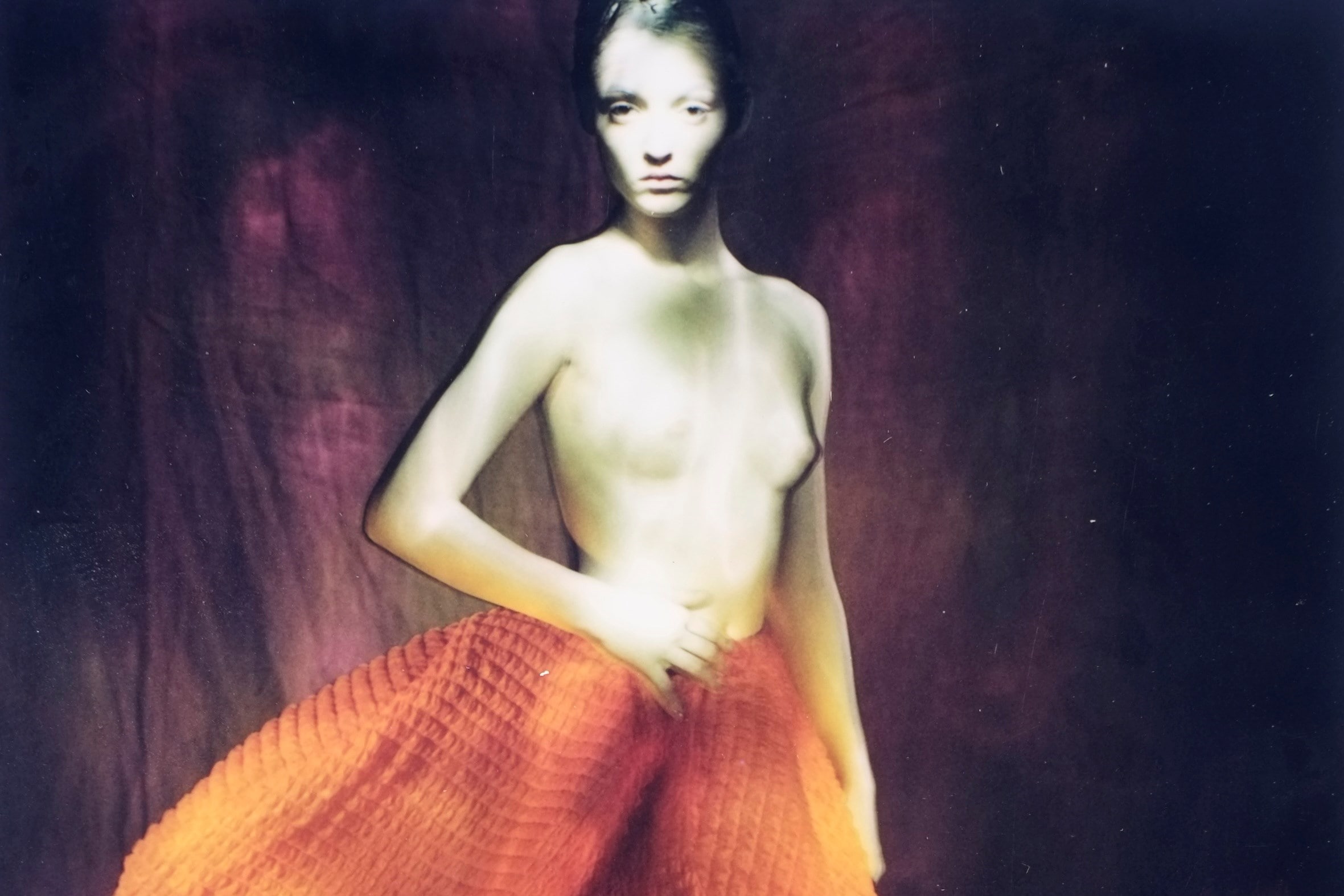On this, the longest day of the year, midsummer celebrations are practised the world over. Whether jumping over bonfires in Estonia (fires represent the majestic, enduring sunlight), laying flower wreaths in rivers in Norway or Russia, making pilgrimages to church or holy springs in Sweden, or performing mock weddings in Brazil (they symbolise the blossoming of new life), acknowledging the rotation of the sun and the jubilance of nature in summer is an integral practice for many.
Artist and writer Lexie Smith proposes her own ritual – using dough, a key medium for her creative expression. Smith has worked with some of New York’s hottest downtown restaurants, from El Rey to Dimes and Cafe Henrie, while her blog, Bread on Earth, explores the history of bakery; her bread sculptures have appeared in galleries, pop-ups and fashion shows. “It made a lot of sense to me to create my own ritual for the solstice,” Smith explains from her apartment in New York. “Because I don’t have a connection to any kind of ancestral lineage and I tend to find it kind of silly to play along with other people’s traditions when you don’t have any connection to them.” As such, a bread-of-earth tradition is born, harnessing the season’s regenerative and celebratory mood. Here, Smith tells us how to create a bread ritual of our own.
1. What you’ll need
-
800g flour
-
552ml water
-
15g salt
-
3/4tsp yeast
Using the baker’s percentage method, Smith devised an easily translatable recipe that could be recreated in any batch size. Starting with 800 grams of flour, Smith chose to work with an approximate 70 percent water ratio (so, 544 millilitres water), to give a relatively workable dough: “something that’s not so wet so I can shape it easily,” she says.
“The dough is a very basic dough, because these breads were intended to be burned. I don’t normally make bread that’s not intended to be eaten – because I have a lot of ethical reasons for not ever wanting to do that – but for the theme of this project, the breads were going to be burned. I needed a dough that was going to be easy to form and not require a whole lot of fermentation time. It was really all about the texture of the dough: it was just a very straightforward low-yeast bread dough – basically like that of a standard baguette.”
Once you have your dough, mix it by hand.
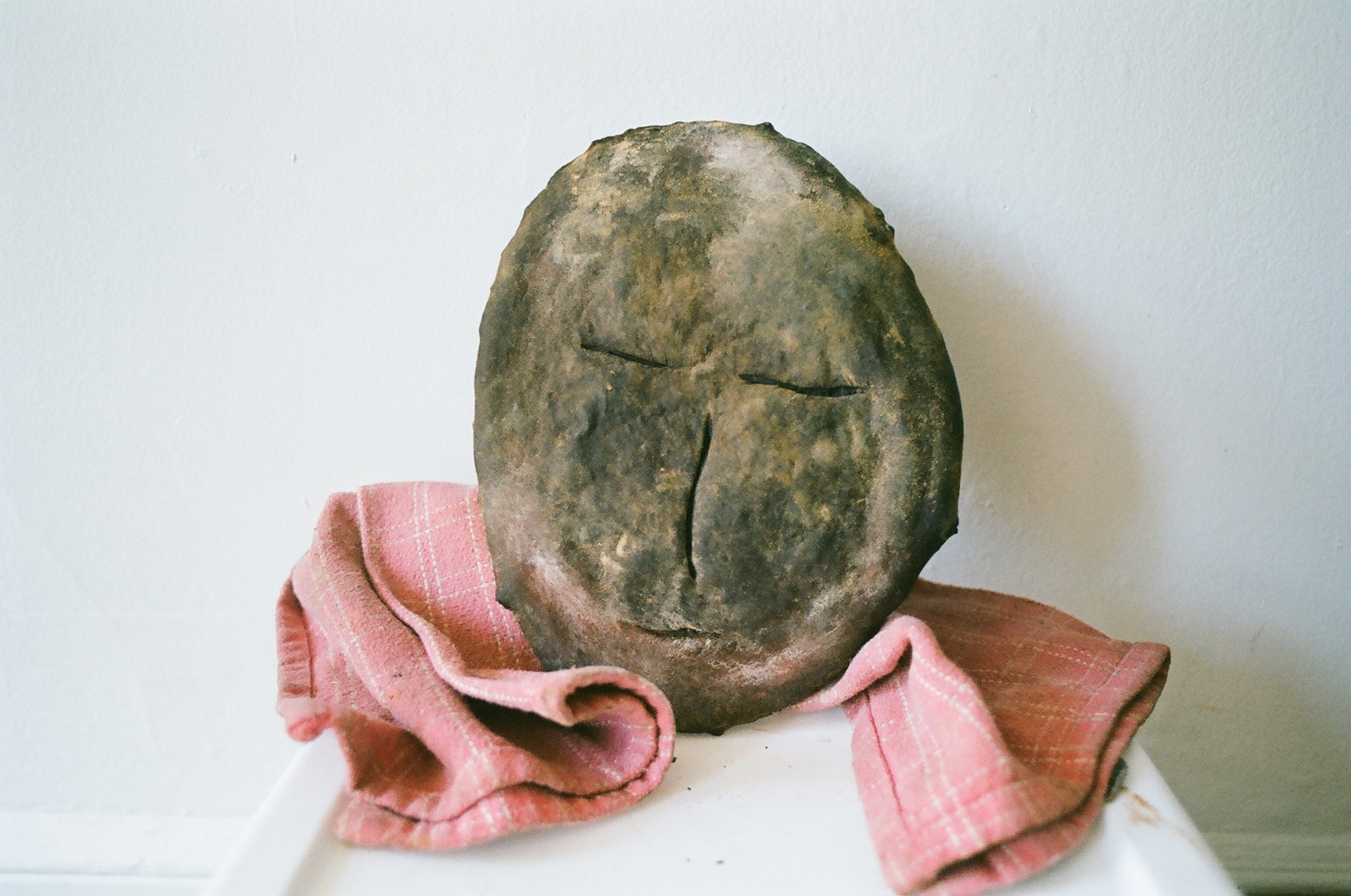
2. On quality ingredients
“I really promote the purchase and use of responsibly harvested and grown flour. It’s an investment but I’m aware that it’s not an option for everybody. To be totally candid, I did not use it for this because I knew that I would be not eating these: I never buy expensive flour and use it for art pieces. But when I’m making bread that is shared and eaten, which is 99.9 percent of the time, I want to be using flour that is going to make people feel good and is being grown by farmers that I trust.”
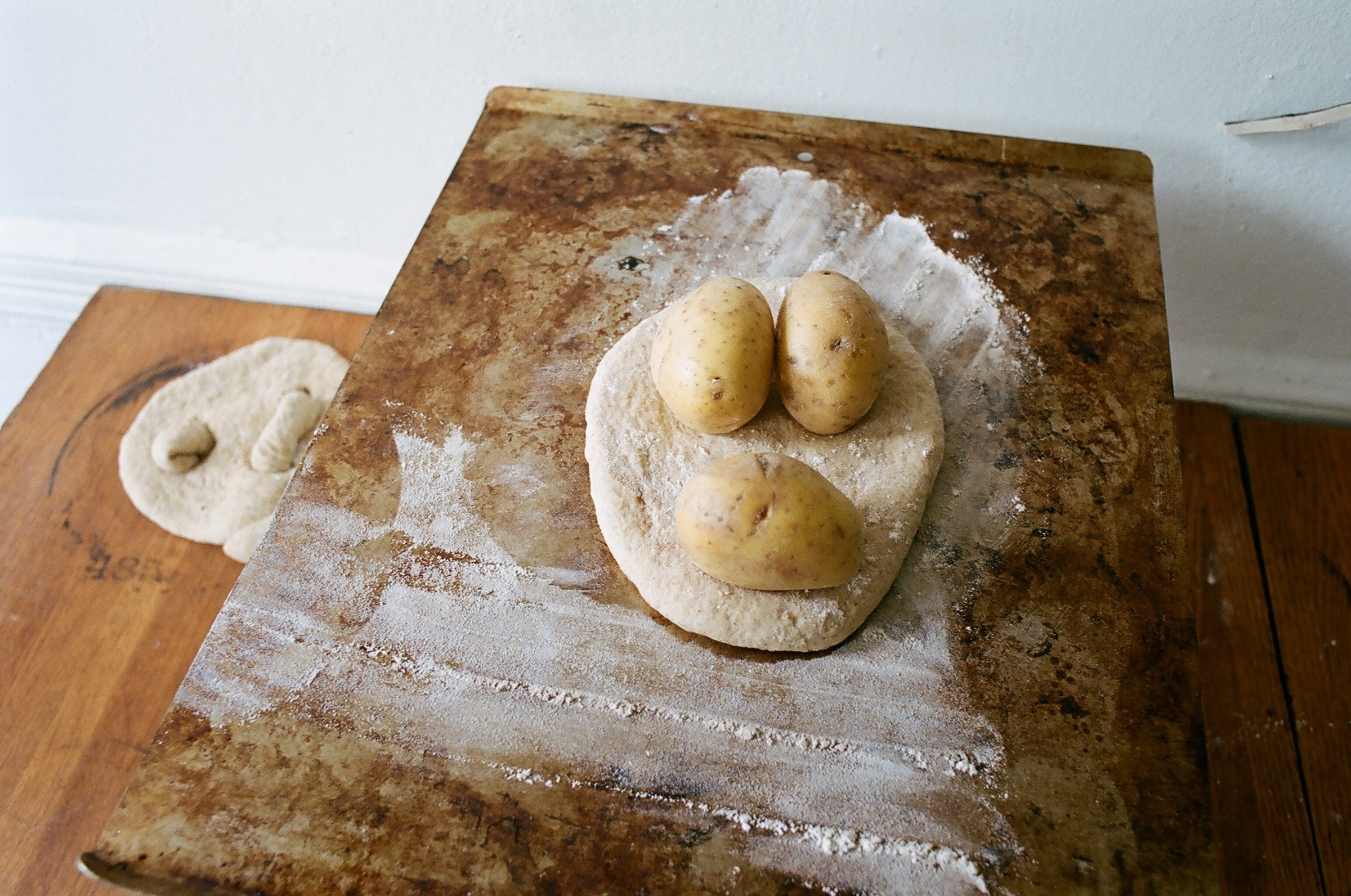
3. The step-by-step
- “Mix together flour and water in a shaggy mass and cover for 20 to 60 minutes.”
- “Sprinkle yeast and salt on top, and mix together with a moist hand. Pull and fold the dough over itself, always keeping hands wet, until the salt and yeast are incorporated. Approximately two to four minutes.”
- “Rest, covered, for five to ten minutes. Fold for another one to two minutes, then rest again for another ten minutes. Do this until the dough feels relatively strong and doesn’t tear too easily when folded. (The strength of the dough is not as important with this recipe as with some others, because you will not need significant rise, and some tears in the final product can enhance the overall texture of the pieces.)”
- “Let rise, covered for 60 to 90 minutes (or overnight in the refrigerator).”
- “When ready to shape and bake, divide the dough into however many pieces you’d like – I start with three – then shape according to preference. Use flour when necessary to keep dough from sticking to counter and hands.”
- “Preheat the oven to 450 degrees fahrenheit (230 degrees celsius). Let rise on flour-dusted sheet trays or linen for 20 to 40 minutes, or until an indent made by a finger fills in slowly – if it bounces back, keep proofing; if it remains, the breads are over proved. Use inverted bowls or other heat proof surfaces as molds/baking structures if you’d like. The breads can be placed on them to prove or just prior to baking.”
- “Bake for 20 to 40 minutes, depending on the size, shape, and desired crispness.”
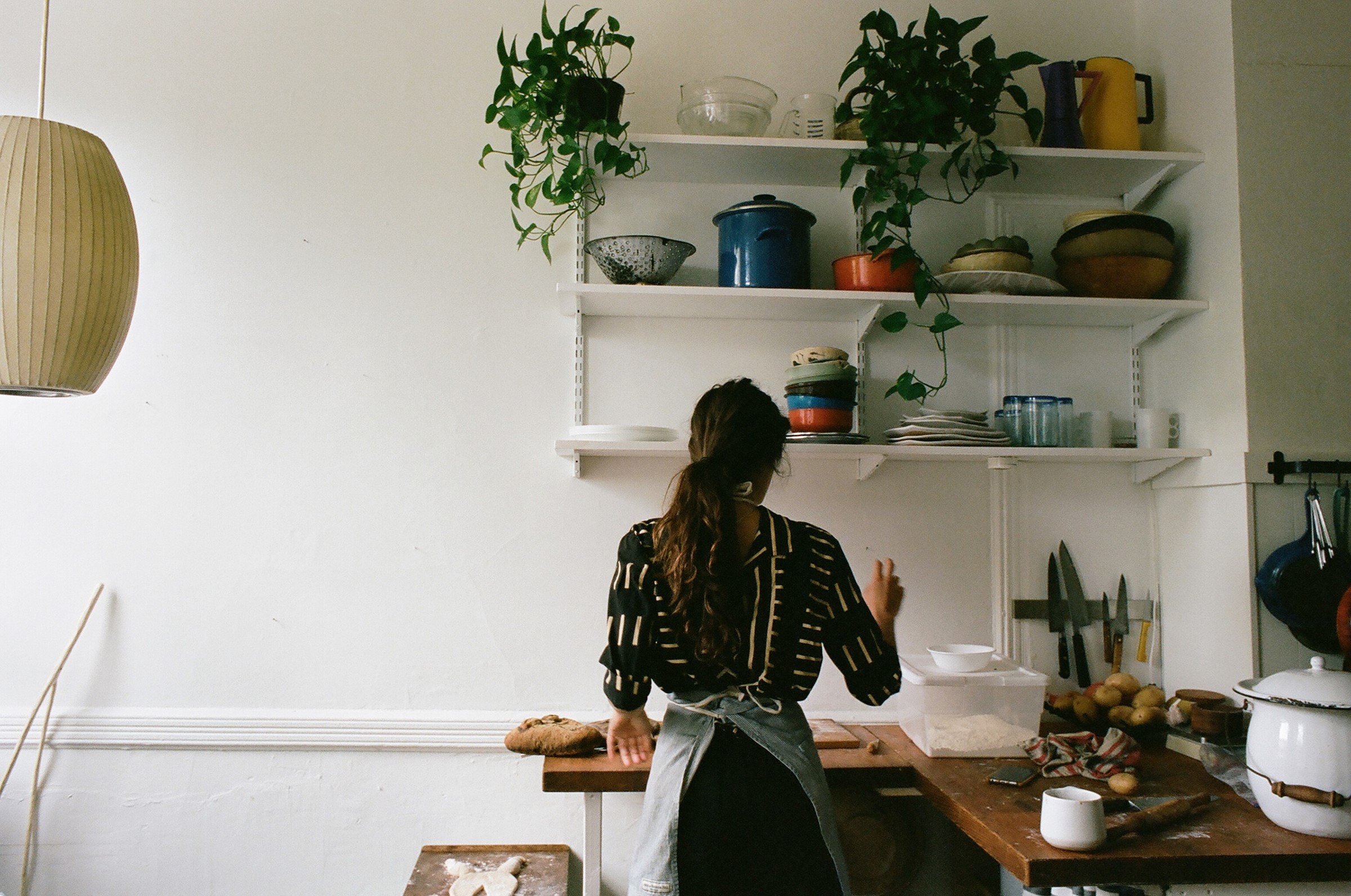
4. On the rituals of breadmaking
With her basic wet dough, Smith set to sculpting her masks. Shapes were improvised and spanned figurative, folkloric, and abstract frames. Circular shapes were molded in bowls for depth, exploring and merging the shapes of faces with that of the sun.
“What comes to mind when I consider the solstice is a universal theme of revival and renewal. There is also the visual theme of circles – you can see it at Stonehenge, you can see it in the wagon wheel of Native Americans in the United States. If you look at the wagon wheel, a formation created usually from stone by various Native American tribes in the US, that’s basically what it is. It’s a really similar shape to the final shape I made with one of the masks. This was devised to find different angles of the sun [and shadows] during the solstice.”
Each object was then placed in the oven on a high heat until blackened.
“There’s a unity between fire and water that is commonly seen around the world. And there’s a lot of jumping through bonfires and sacrifices and things like that. While neither of those necessarily have any bearing on my life, there was definitely the element of creating these different variations of face on a mask using the same medium, and then sacrificing them with this fire – if you want to make it that symbolic. I liked the idea of finding a way where fire and water could live together: bread is just water and flour after all.
“When you burn them there’s a way they can exist despite having been sacrificed to the fire. The masks are actually incredibly brittle – they kept breaking. But I think that’s all part of it because, ultimately, they’re not made to be kept like artefacts, even though they were intended to look like artefacts. They were made to be a celebration of this time and then – and this is part of why I love making things out of bread – they disintegrate or they get eaten or they rot. They’re not meant to last. They’re meant to be celebrated and then they pass through and they’re gone, and that’s why I like to photograph them.”

5. On the meaning of masks
“I wanted to do masks because, from a personal point of view, I think that to create an endless variety of identities using the same medium is something that makes sense to me personally because we exist in a world where everyone wants us to be able to define ourselves as one thing and identify ourselves as one thing. Like, ‘What are you? A photographer? Are you an artist? Are you a writer? Are you a baker?’ And I just can’t, so the idea of working with flour and water and still creating this multitude of identities made a lot of sense to me.
“As far as the solstice goes, from a variety of angles it feels relevant. The sun in the sky holds endless different purposes and power – it looks different and it feels different throughout the year. The seasons move, I think we become different people – I feel that in a very real way, especially as we transition into summer. When I set out thinking about this I was asking, ‘How do I represent this transition of character and a celebration of multitudes of characters?’ And then also, if you look at solstice celebrations across the world there’s something about celebration that makes people want to put on masks and dance around as a means of inoculating yourself from normal everyday life and allowing for festivity.
“But baking, for me, is almost a spiritual ritual: something that allows you to have an authentic experience as in, ‘I am relating directly to a material. I am feeling it directly and this is not a simulation.’ And that’s why I encourage other people to make bread – it’s very therapeutic. The variety of masks, the variety of faces, and the personalities that come through are testament to the fact that, when you kind of let yourself move through this medium, many things can come out of it that you’re not able to predict just on a simple fun and creative level.”
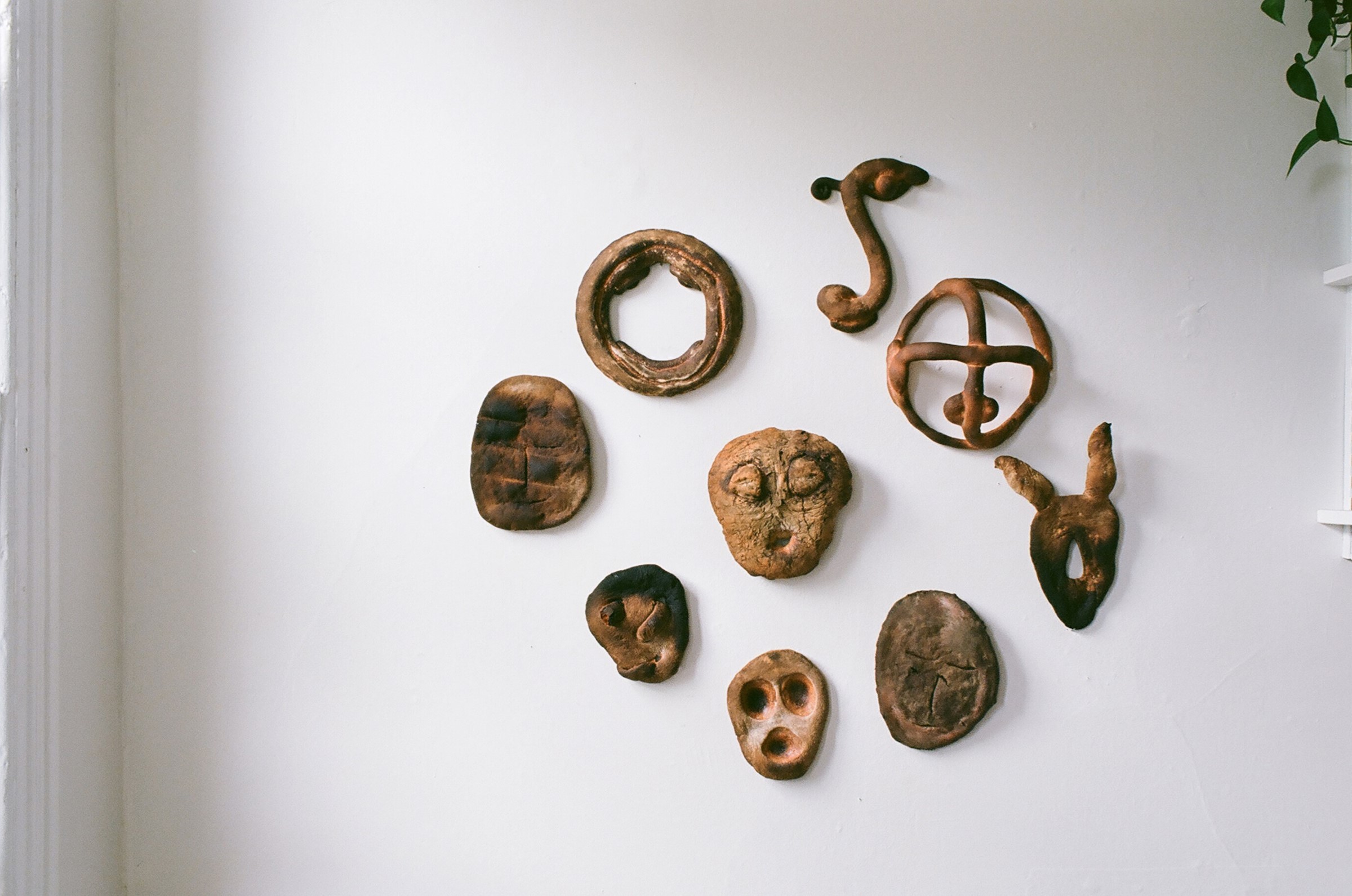
6. On bread for beginners
“I usually recommend a bread that I started with and is still one of my favourite breads to make and eat, which is a focaccia – it doesn’t require shaping. Shaping, I think, is the thing that really terrifies people, because when it comes out of the oven and it looks like garbage you’re like: ‘Oh, I can’t do this.’ But with focaccia you don’t need to form a strong gluten structure, which is another scary part when you’re trying to develop strength – but it just takes practice.
“I encourage people to start with things that don’t require these skills at the outset, just to get a feel for it and feel the satisfaction of making a loaf of bread, which is amazing, definitely. I’m still amazed by it every time. It’s like alchemy, it’s magic, it’s like something that grows and it tastes really good and people are impressed by it, which I’m still amused by. I think that encouraging someone to develop the skills to do it themselves so they can have that sort of empowerment is really nice. I would say don’t start out with sourdough. Some people want to jump right in with sourdough. I think you have to understand the language before you can start philosophising in that language – that’s sort of like what sourdough’s like!”
With thanks to Lexie Smith and Bread of Earth.


